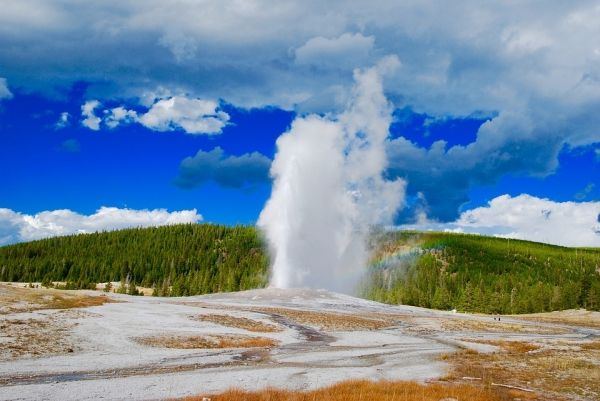When Yellowstone National Park’s Steamboat Geyser — which shoots water higher than any active geyser in the world — reawakened in 2018 after three and a half years of dormancy, some speculated that it was a harbinger of possible explosive volcanic eruptions within the surrounding geyser basin. These so-called hydrothermal explosions can hurl mud, sand and rocks into the air and release hot steam, endangering lives; such an explosion on White Island in New Zealand in December 2019 killed 22 people.
A new study by geoscientists who study geysers throws cold water on that idea, finding few indications of underground magma movement that would be a prerequisite to an eruption. The geysers sit just outside the nation’s largest and most dynamic volcanic caldera, but no major eruptions have occurred in the past 70,000 years.
“Hydrothermal explosions — basically hot water exploding because it comes into contact with hot rock — are one of the biggest hazards in Yellowstone,” said Michael Manga, professor of earth and planetary sciences at the University of California, Berkeley, and the study’s senior author. “The reason that they are problematic is that they are very hard to predict; it is not clear if there are any precursors that would allow you to provide warning.”
He and his team found that, while the ground around the geyser rose and seismicity increased somewhat before the geyser reactivated, and the area currently is radiating slightly more heat into the atmosphere, no other dormant geysers in the basin have restarted. The temperature of the groundwater propelling Steamboat’s eruptions has also not increased, and no sequence of Steamboat eruptions, other than the one that started in 2018, occurred after periods of high seismic activity.
Read more at University of California - Berkeley
Photo Credit: TXVisual via Pixabay


